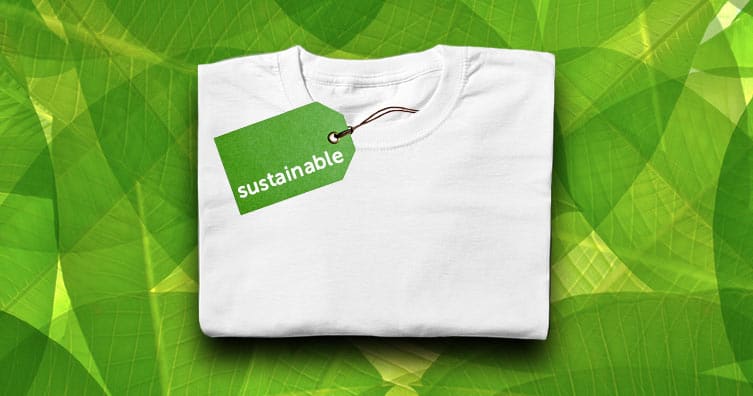Cape Town Sustainable Fashion Designers Leading the Green Motion
Wiki Article
Remain Ahead of the Curve by Exploring Innovative Fashion Trends
In a market as dynamic as fashion, remaining ahead entails even more than just adhering to present trends-- it requires an exploration of advancement. The convergence of modern technology and fashion advertises a new age of customer interaction.
Embracing Smart Textiles
Recently, the style sector has seen a transformative shift with the combination of clever fabrics, an advanced advancement that mixes modern technology with textile. This development represents not only a fusion of aesthetic appeals and capability yet additionally a substantial jump in the direction of sustainability and customization in style. Smart fabrics, likewise called e-textiles, installed sophisticated electronics such as sensors and conductive threads within the fabric, enabling garments to communicate with the wearer or the environment.These fabrics are made to check physical criteria, such as heart price or body temperature, offering real-time health and wellness analytics. Beyond health applications, clever fabrics are additionally being made use of for flexible garments, which can alter color or pattern in reaction to environmental stimuli, hence supplying a vibrant style experience.
Additionally, the advancement of energy-harvesting textiles that generate power from movement or sunshine is leading the way for self-dependent wearable innovation. This advancement is attracting environmentally conscious customers and developers aiming to reduce the eco-friendly impact of fashion. As research and growth in this field advance, clever fabrics are expected to come to be progressively common, improving the landscape of contemporary fashion with their multifunctional capacities.
The Increase of 3D Printing
Revolutionizing the manufacturing landscape, 3D printing has actually become a game-changer in the garment industry. This cutting-edge innovation has made it possible for designers to press the boundaries of creative thinking, creating detailed and customized garments that were formerly inconceivable. By leveraging electronic design and additive production, 3D printing helps with the creation of complicated geometries and patterns, permitting developers to try out brand-new structures and frameworks.A notable advantage of 3D printing in style is its ability to create on-demand, decreasing waste and decreasing stock demands. This efficiency not only maximizes production processes however additionally enables rapid prototyping, allowing developers to bring their visions to life in a much shorter timeframe. Additionally, 3D printing supports personalization somewhat unmatched by conventional techniques, using individualized fits and distinct styles tailored to individual consumer preferences.
The rise of 3D printing has likewise democratized fashion, making it easily accessible to arising developers that can currently produce high-grade items without significant economic investment in traditional manufacturing infrastructure. As technology proceeds to advance, the apparel industry is positioned to harness the complete possibility of 3D printing, discovering brand-new materials and methods that will definitely redefine just how style is conceived and produced.
Sustainable Style Technologies
As the style sector faces the pushing demand for ecological obligation, sustainable fashion innovations have arised at the center of transformative adjustment. The expanding understanding of environmental impact has fueled a change in the direction of even more eco-conscious techniques and products. Developers and brand names are now focusing on sustainability, including techniques that reduce waste and decrease carbon footprints.One considerable advancement is the rise of round style, which stresses recycling and upcycling to expand the lifecycle of garments. This approach not only decreases waste but also encourages customers to adopt a more mindful approach to clothing intake. In addition, making use of lasting products, such as organic cotton, hemp, and recycled polyester, has actually acquired traction. These products need less water and energy during production, considerably reducing environmental impact.
Another development exists in the adoption of ingenious dyeing strategies that utilize all-natural dyes or waterless procedures, thereby minimizing the substantial amounts of water and chemicals commonly utilized in textile dyeing. Furthermore, improvements in biotechnology have actually led to the creation of lab-grown leather and materials, using environmentally friendly and cruelty-free options to standard products. Via these introducing initiatives, the apparel industry is making meaningful strides towards a more sustainable future.

Tech-Integrated Garments
Tech-integrated garments stands for an innovative fusion of style and modern technology, reshaping how individuals connect with their apparel. This ingenious domain is noted by the addition of smart fabrics and embedded digital components, boosting both performance and aesthetic allure. From fitness trackers installed in sports apparel to heated useful reference coats managed via smart device applications, tech-integrated clothing uses consumers unprecedented convenience and adaptability.Introducing brand names are driving this fad, concentrating on developing garments that reply to ecological stimulations or individual commands. As an example, some garments can alter color or pattern in reaction to temperature shifts, while others incorporate biometric sensors to monitor health metrics like heart rate or stress and anxiety degrees. The smooth combination of innovation into textiles also reaches ecological sustainability, with initiatives to create self-cleaning materials or garments that get used to weather, thus minimizing the demand for numerous layers.
Additionally, the development of wearable innovation is not just limited to clothing yet reaches devices like watches and eyeglasses, further broadening the extent of tech-integrated style. As the market continues to innovate, the capacity for personalization and customization in clothing grows, supplying consumers distinct, tech-enhanced fashion experiences that accommodate their private demands and choices.
Future of Virtual Fashion
In the last few years, the future of virtual fashion has emerged as a transformative force within the sector, leveraging advancements in digital innovation to redefine just how fashion is developed, experienced, and taken in. By incorporating enhanced fact (AR), virtual fact (VR), and 3D style tools, designers can now craft interactive and immersive experiences that transcend standard style limits. Digital fashion enables for the creation of garments that exist exclusively in electronic environments, using unlimited opportunities for innovation without the restrictions of physical manufacturing.This digital shift not just presents chances for imaginative expression but likewise addresses sustainability concerns intrinsic in traditional fashion methods. Cape Town Sustainable Fashion. By removing the need for physical resources, online style reduces waste and reduces carbon impacts. Furthermore, the increase of digital style aligns with the boosting customer need for distinct and personalized experiences, as virtual garments can be personalized and customized to individual preferences with simplicity

Conclusion
The fashion business's future hinge on the integration of cutting-edge technologies and lasting techniques - Cape Town Sustainable Fashion. Smart textiles and tech-integrated clothing are improving capability, while 3D printing supplies opportunities for customization and waste reduction. Lasting style, with circular approaches and green products, demonstrates a dedication to ecological stewardship. Additionally, virtual style is poised to redefine customer communications. Adapting to these fads is crucial for brand names seeking to stay relevant and competitive in this swiftly developing landscape.In recent years, the style industry has actually experienced a transformative change with the combination of clever textiles, a sophisticated innovation that blends innovation with textile.As the style industry grapples with the pressing need for environmental obligation, sustainable style developments have emerged at the leading edge of transformative modification.In recent years, more information the future of online fashion has emerged as a transformative force within the market, leveraging improvements in digital innovation to redefine exactly how style is produced, experienced, and taken in. The increase of online fashion lines up with the boosting consumer demand for distinct and individualized experiences, as online garments visit the site can be personalized and customized to private choices with simplicity.
The fashion industry's future lies in the integration of lasting techniques and ingenious innovations.
Report this wiki page